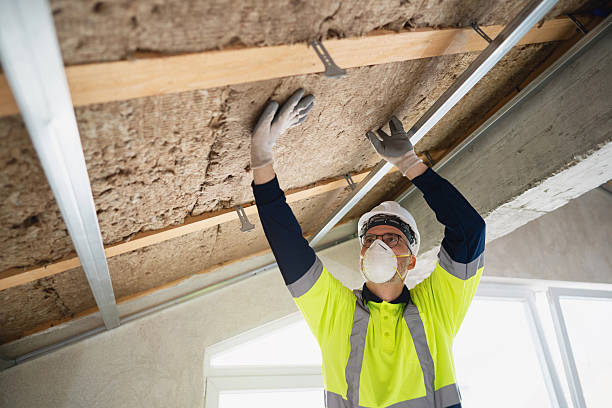Insulating the roof of a property is often treated as the go-to fix for improving energy efficiency. It makes sense in theory: heat rises, so trap it before it escapes. But homes and buildings are more complex ecosystems than we sometimes credit them for, and plugging up just one point of energy loss—however significant—doesn’t guarantee you’re sealing the whole system. In fact, insulating only the roof might leave you with more problems than you started with, just less obvious ones.
The idea that roof insulation alone is sufficient can be tempting. It’s less invasive than full-envelope solutions, quicker to install, and often cheaper upfront. But the gains might not stretch as far as expected. Here’s why.
How Heat Moves, and Why the Roof Isn’t the Whole Picture
The principle that heat rises is only partially helpful. Heat moves in three main ways: conduction, convection, and radiation. Insulating the roof tackles some of that movement, sure—but not all. It ignores how heat also flows through walls, floors, and even windows. Especially in structures where the attic or upper crawl space is ventilated (or semi-conditioned), roof-only insulation can act like a lid on a sieve.
Air doesn’t just float upward in a tidy column. It swirls, escapes, and seeps through every possible opening, from wall cavities to electrical outlets. In colder months, while you may lose less heat through the ceiling, the walls themselves can become cold surfaces that pull warmth out of the air and create drafts. And in warmer months? Radiant heat from the sun doesn’t just hit the roof—it wraps the structure.
The Hidden Risks of Partial Insulation
So, what happens if only the top is insulated? The short answer is: uneven thermal performance. The longer answer involves condensation, thermal bridging, and increased utility bills.
Insulating only one part of a building envelope can create a kind of thermal imbalance. The warm air inside your home looks for the path of least resistance to escape—or enter, in summer. If the roof is sealed tightly but the walls aren’t, heat will simply reroute its journey. It’s like closing one window in a drafty house while leaving the others wide open. And worse, you may actually increase condensation in the uninsulated sections, because warm, moist indoor air meets cold wall surfaces.
Thermal bridging, where heat bypasses insulation via materials that conduct it more easily (like wall studs or window frames), becomes more pronounced when only one portion is addressed. Instead of a balanced, layered system working together to manage temperature, you get cold spots, uneven comfort, and reduced performance from your HVAC system.
When Roof-Only Works—and When It Doesn’t
There are niche scenarios where roof-only insulation might be enough—for instance, in a well-sealed, single-level outbuilding used seasonally. But for most homes, particularly those with open-plan layouts or conditioned lofts, it just doesn’t hold up.
Consider older properties with uninsulated cavity walls. Adding roof insulation may improve things marginally, but it won’t prevent that slow, steady loss of heat through poorly sealed external walls. Similarly, in hot climates, radiant heat strikes every sun-facing surface. A reflective barrier on the roof helps, but the heat gain through walls—especially west-facing ones—is no joke.
Plus, there’s the issue of airflow. Insulating the roof without accounting for ventilation patterns can trap hot air or moisture in places it shouldn’t be. And moisture, when combined with insulation, often leads to mold. You’re then not only dealing with inefficiency but also indoor air quality issues.
The Cost of Convenience
There’s an undeniable appeal to doing the bare minimum. It feels efficient, pragmatic. But with insulation, that mindset can backfire. Many homeowners go for roof-only solutions because they’re quicker and less messy than, say, opening up drywall or drilling into brick for wall cavity fill.
However, the costs saved upfront may just show up on the utility bill later, in the form of a heater that runs longer or an air conditioner that struggles in peak summer. Worse, the lack of comfort (and the creeping damp) often means revisiting the problem anyway—only this time, after you’ve already spent money on a partial fix.
So what seems like a neat shortcut may actually elongate the journey. Full-envelope insulation, when done thoughtfully, gives a far more substantial return on investment. It creates a stable internal climate that your heating and cooling systems can manage more easily and efficiently.
Insulation as a System, Not a Patch
Ultimately, insulation works best when it’s treated as a cohesive system. Roof-only fixes can feel like putting a hat on in winter while wearing a T-shirt—you’re addressing part of the problem but missing the larger discomfort. It’s not about over-insulating, either. It’s about targeting the areas that genuinely make a difference and doing so in a coordinated way.
Comprehensive doesn’t have to mean overkill. It just means thinking about the building as a whole, and making choices that support long-term performance, not just short-term ease. Because when the cold creeps in—or the heat floods through—you’ll be glad you took the time to cover all the bases. Or in this case, all the surfaces.
In addition to considering comprehensive insulation solutions, it’s crucial to ensure that your roofing materials and installation are of the highest quality. A well-installed roof not only enhances energy efficiency but also protects against weather-related damage. For those looking to explore top-notch roofing options and expert advice, click for details to discover a range of services that can complement your insulation efforts. By integrating superior roofing with effective insulation, you can achieve a more comfortable and energy-efficient home environment, ultimately leading to long-term savings and sustainability.

